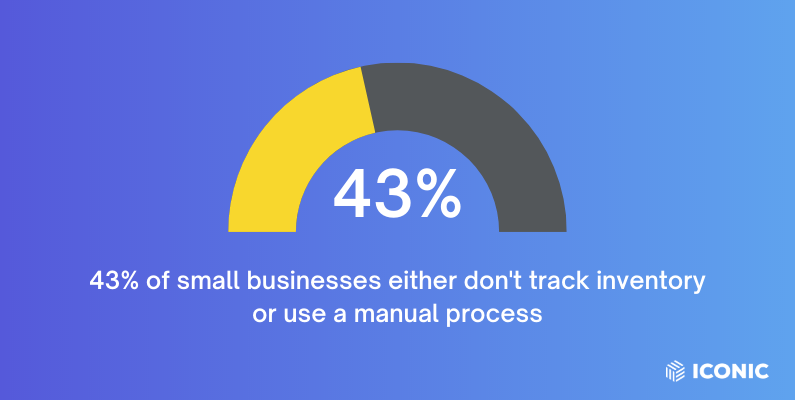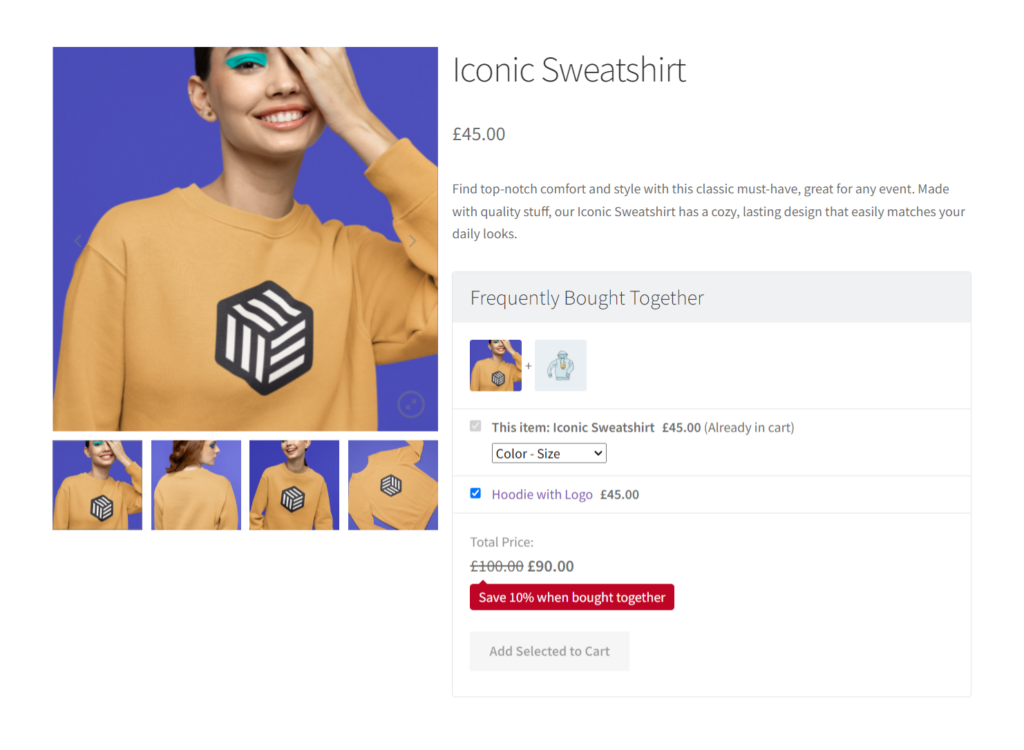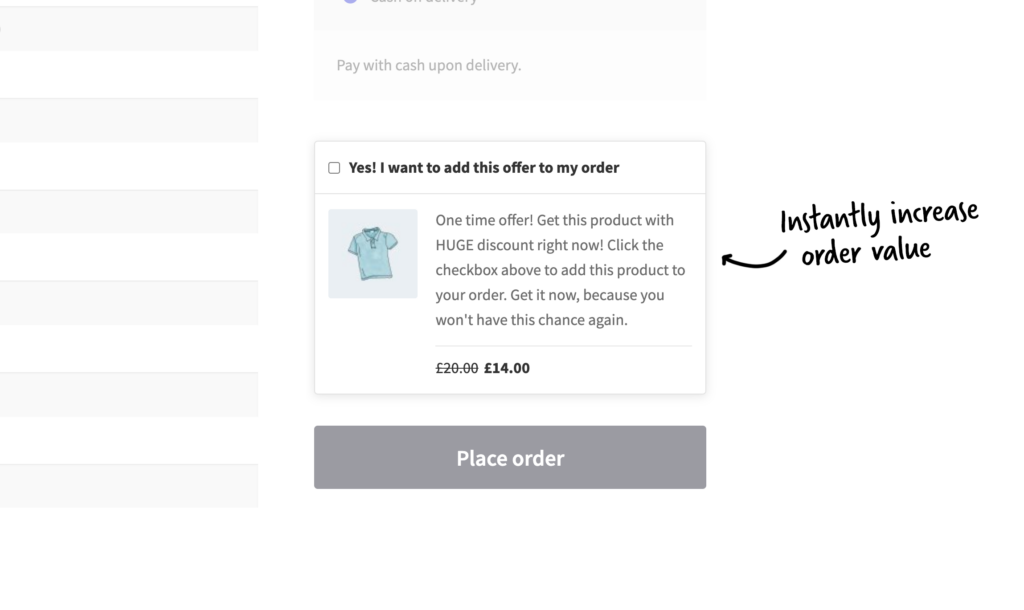You’re not alone if you’ve recently Googled ‘What is deadstock?’. While you might not be familiar with the term, you’re probably aware of the challenge (or feeling) of having excess inventory as an online store owner.
Running an ecommerce store has its highs, but deadstock isn’t one of them. Issues with inventory management, liquidation, or unsold stock all point to a deadstock problem.
📈 After all, deadstock costs retailers a staggering $50 billion annually in the US alone.
We’re on a mission to help you avoid and fix your deadstock problems. So in this article, we’ll walk you through the following:
- What deadstock is with examples.
- The causes of deadstock.
- The costs of deadstock.
- How to avoid deadstock in your ecommerce store.
- What to do if you have deadstock in your ecommerce store.
But first, let’s address what deadstock is in the first place, so we’re on the same page.

What is deadstock?
Deadstock is unsold inventory that sits on your shelf or warehouse for an extended period with a low chance of selling. As with any product, the longer it goes unsold, the more difficult it is to sell.
There are a few reasons this can happen: seasonal products, poor inventory management software, and high order quantity (to name a few). Instead of making a profit on your products, you must pay to store them.
Here are a few examples of deadstock:
- In the fashion industry, fashion trends come and go like the seasons (even quicker than that!). That being the case, it’s no surprise that fashion brands are likelier to have deadstock. By the time the raw materials come in for brand-new products, lo and behold, they’ve run into deadstock fabric.
- The tech industry is notorious for having outdated or unsold products. The competitive nature of tech products means that only the latest and greatest gadgets are promoted. This is to attract customers willing to pay for high-quality products. This leaves out all the previous versions and generations hanging on for their life.
Unfortunately, what ends up happening to all this excess stock, if it’s unsellable, is that it ends up in landfills. So with this in mind, let’s go through some of the causes contributing to this.

The causes of deadstock
It’s no one’s goal to have deadstock. It affects poor sales, low-profit margins, and inventory control. If you know the leading causes, you’ll have a leg up in managing or preventing them.
Here are several factors that can contribute to dead inventory:
- Overestimating demand: Retailers may order too much stock, thinking there is a higher level of demand than there actually is. They might also underestimate the number of competitors vying for the same customers.
- Poor inventory management: Keeping stock levels and sales up can be challenging without a proper inventory management system. This can lead to overstocking and deadstock issues.
- Changing trends: In industries like fashion and technology, trends can change quickly. This leaves retailers with unsold inventory that is no longer in demand.
- Inaccurate forecasting: Inaccurate forecasting can result in extra inventory. You can make better decisions regarding your supply chain and lead times by researching and forecasting the market or demand. This can reduce the likelihood of having excess stock.
- External unforeseen events: In an extreme scenario, a product line or brand might be canceled or protested due to external circumstances out of their control. In such a case, even a lower price or placing it on eBay cannot save the business from eventually doing a tax write-off.
If you’re running into any of these factors, you understand what deadstock means. The difficulty of hoarding stock inventory is that it comes with an opportunity cost, among other expenses we will explore now.

The cost of deadstock
As an online store owner, the immediate impact of deadstock is on your business and bottom line. But also, consider the toll on your mental health if you must find ways to compensate for lost revenue.
While that isn’t a measurable cost, here are some costs that deadstock can significantly impact your ecommerce store.
- Tied-up capital: Having deadstock means that your hard-earned money is stuck in products that have not brought you any return. This ties up valuable capital that could be invested in other areas of your business.
- Storage costs: Storing unsold inventory requires space, leading to valuable warehouse space being overtaken. This also leads to increased warehousing costs and reduced efficiency. For a fashion brand whose stock turns every few months, it’s not feasible to store every SKU.
- Obsolescence: The longer items sit unsold, the greater the risk of becoming obsolete (outdated or produced). This decreases their chances of being sold. A prime example of this is gaming consoles. Manufacturers are preoccupied with upkeeping and selling the latest versions.
- Environmental impact: Unsold inventory can contribute to waste and pollution. Getting rid of deadstock means sending it to landfills or going through other environmentally harmful processes. It’s estimated that 5 billion pounds of retail returns end up in landfills annually in the US.
- Opportunity cost: You can use the space deadstock items occupy for other profitable and popular items. Items that can turn a profit for your business.
If you believe sustainability is key to a healthy business and want to avoid any of the above costs associated with deadstock items, here are ways to do that.

How to avoid deadstock in your ecommerce store
Nothing is certain due to the nature of being in business. With that being the case, it is possible to add strategies and actions to reduce any negative impact on your store. Like any other area of your business, you can put guardrails in place to protect it as much as possible.
Here are a few guardrails to prevent deadstock from piling up in your store:
Understand and know your customers
Before you place an inventory order, do your research. Tap into your audience and intended market to make sure there is demand for your products.
One way you can do this is to create a customer persona (or profile). With that in hand, you can ask product-related questions to understand if your products fit with them and the market you’re in.
Market research and surveys are essential to your success, so find ways to get consumer feedback before you tie up your cash flow. The profile, gender, location, and interests of your audience are directly connected to the sales of your store.
Better inventory management
You probably have an inventory management system, but if it’s manual, it’s time to reconsider your options. If you have inventory management software, make sure it can track sales, monitor stock levels, and anticipate customer demand.
Another reason to invest in better inventory management software is that it can help you analyze the reorder points. That way, you don’t hold stock beyond the safety point and can avoid unnecessary storage costs.
A good inventory management system will help you avoid overstocking and minimize headstock.

According to a Wasp Barcode Technologies report, 43% of small businesses either do not track inventory or use a manual process. This can increase the likelihood of deadstock issues.
Work with flexible suppliers
If you’ve been ordering high quantities in batches because your supplier doesn’t offer other options, see if you can shop for a new one. Yes, even if it’s a bit more expensive. Consider again the costs associated with having deadstock, as they might offset any savings you’re making on the supplier side.
Build relationships with suppliers that offer flexibility regarding order quantities and return policies. The right supplier can help you better manage your inventory, reduce the risk of overstocking, and potentially return unsold items for a partial refund, store credit, or exchange for other products.
Monitor trends and consumer preferences
Stay on top of industry trends and consumer preferences to make sure your products are in demand. Check up on your inventory regularly and adjust your product mix as needed.
Also, understand the items and trends customers love and consider them for future product releases. Use inventory management software to identify products that sell out quickly. Stock up on those ahead of time instead of stocking up on unwanted ones.
Selling and stocking up on popular items is one way to avoid deadstock. It’s doubtful you will sell out of your inventory, but if you know what your customers want and are willing to pay for, you’ll reduce the chance of running into inventory problems.

What to do if you have deadstock in your ecommerce store
Before you panic about moving your whole online store to eBay or running clearance sale after clearance sale, there are some things you can try to move your deadstock (even if it’s just an inch forward!).
Here are 6 solutions to help you get rid of deadstock items.
1. Bundle them in with other more popular products
You can combine slow-moving items with popular products to create product bundling.
If you have a WooCommerce store, Iconic Sales Booster for WooCommerce can help you with this. It allows you to create ‘Frequently Bought Together’ product bundles, pairing deadstock items with bestsellers to increase sales.

For example, if you have a slow-selling phone case, you can use Sales Booster to bundle it with a popular smartphone. This encourages customers to purchase both items together as they don’t need additional research on a phone case.
Iconic Sales Booster for WooCommerce
Use proven cross-selling techniques to increase the average order value of your store.
2. Offer them as attractive special offers at the checkout
You can offer deadstock items as free gifts or heavily discounted offers at checkout. This can make it a no-brainer for the customer to add to their order.

Iconic Sales Booster for WooCommerce makes it easy to set up these promotions. With it, you can customize the offers based on order value, products in the cart, or customer history. By setting the offers that way, customers may be more likely to purchase your deadstock items.
Iconic Sales Booster for WooCommerce
Use proven cross-selling techniques to increase the average order value of your store.
3. Flash sales and clearance sales
You can create flash or clearance sales to invite a sense of urgency, excitement, and scarcity around the deadstock items. This can motivate them to act fast and buy more.
For example, a limited-time promotion can encourage customers to take advantage of discounted prices and help you clear out unsold inventory quickly.
4. Loyalty programs
You can implement a loyalty program to incentivize customers to purchase deadstock items by offering additional rewards.
Here are some ways you can use a loyalty program to move deadstock:
- Offer bonus points or rewards for buying your deadstock items. You can incentivize your customers to buy your deadstock items by giving them more points or rewards than usual or by creating a special category of rewards that can only be redeemed with your deadstock items.
- Create a tiered loyalty program that offers different benefits based on the customer’s spending level. You can also use the higher tiers to promote your deadstock items by giving them exclusive access or discounts.
You can use email marketing and social media channels to promote your deadstock items and reach new customers. Create campaigns to target and raise awareness about discounted products and drive traffic to your store.
Here are some ways to do that:
- Send emails to your subscribers with special offers, discounts, or freebies for your deadstock items. You can segment your list based on their interests, preferences, or purchase history to make your emails more relevant and personalized.
- Share your deadstock items on social media platforms with engaging content, such as videos, stories, or user-generated content. You can also create a sense of urgency by using countdown timers, limited-time offers, or flash sales.
- Integrate your email and social media marketing by adding icons, buttons, or feeds to your emails, encouraging subscribers to follow you on social media, or inviting them to share your content with their networks.
6. Donate, recycle, or return to the supplier
If all else fails, consider donating unsold items to charities, recycling them, or negotiating a return with your supplier. Returning items for a partial refund, store credit, or exchange for other products can help you recover some of your investment and reduce deadstock.
Donating or recycling deadstock can help you reduce your environmental impact, save on storage costs, and support social or economic initiatives.
7. Sell to liquidation companies
Liquidation companies buy excess inventory from retailers and resell them to other businesses or consumers at a discounted price.
Think of ‘off the rack’ stores or potentially ‘deal websites’ like Groupon. You can sell your deadstock items to them directly or use their online platforms to reach a broader market.
Get to grips with deadstock today
In this article, we’ve looked at some examples, causes, and costs of deadstock. We’ve also offered strategies to prevent and address it in your ecommerce store.
You can minimize deadstock, optimize inventory management, and boost your profit margins by implementing some of these strategies and tools, like the Iconic Sales Booster for WooCommerce.
Keep deadstock from holding your business back. Invest in Iconic Sales Booster for WooCommerce and start tackling deadstock today.
Iconic Sales Booster for WooCommerce
Use proven cross-selling techniques to increase the average order value of your store.
